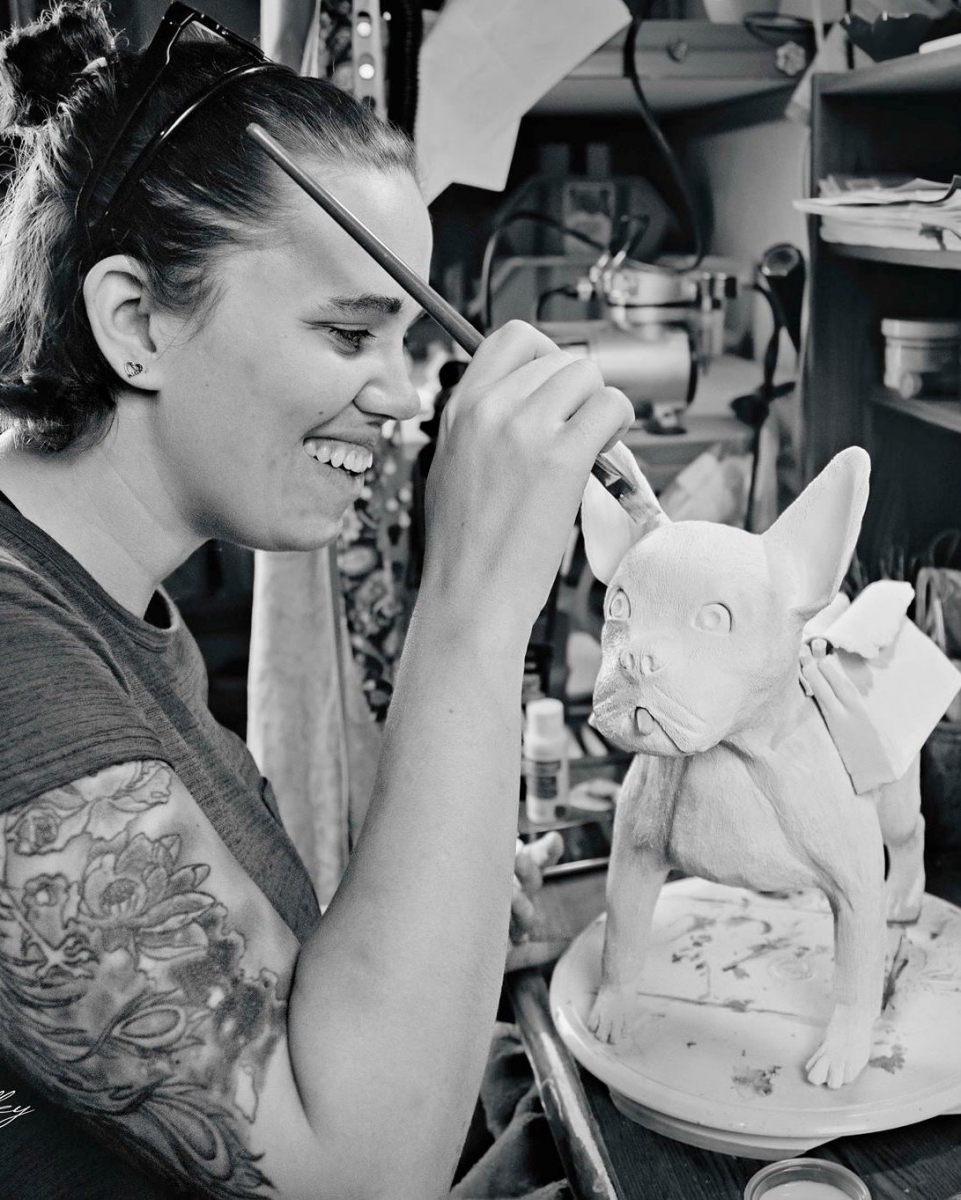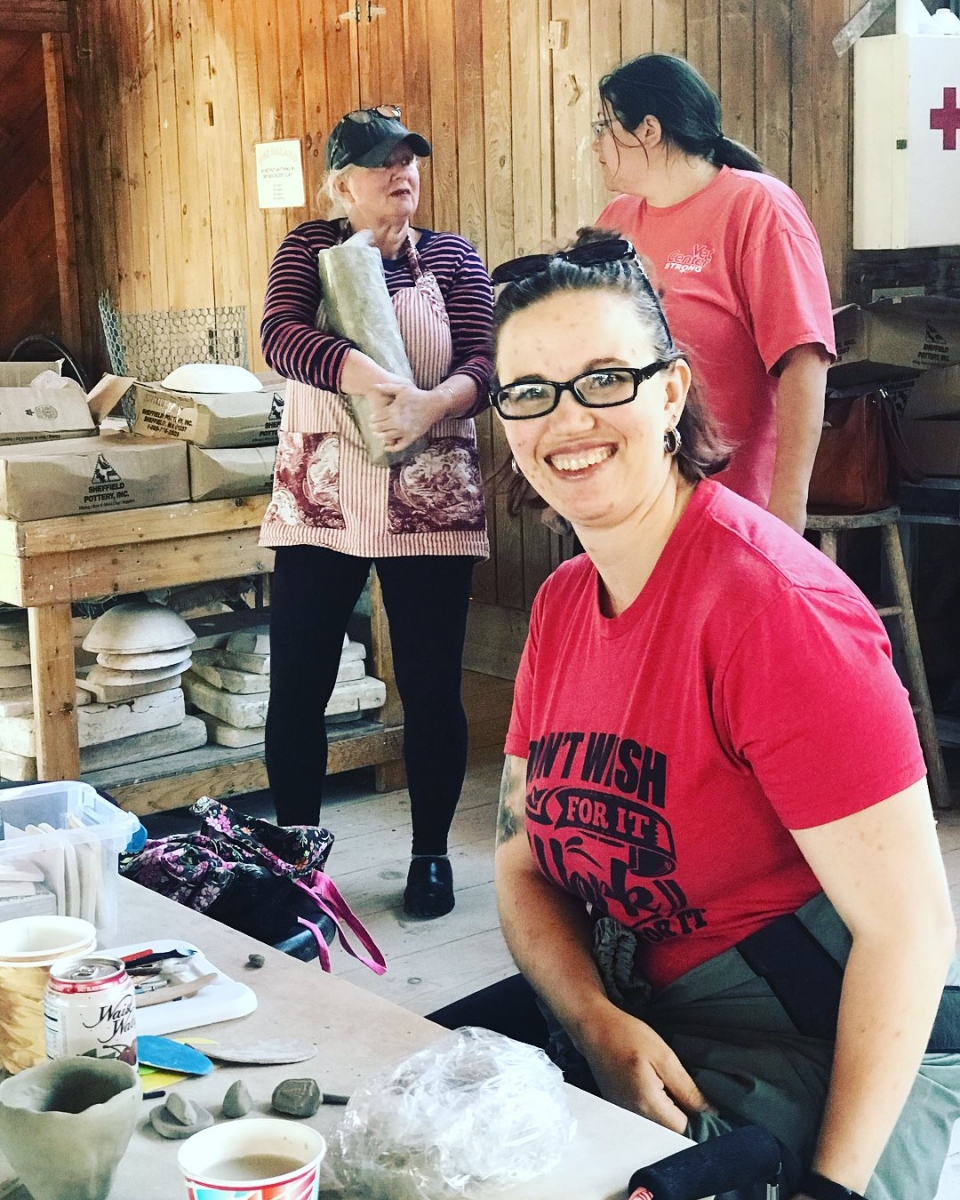Combat Medic to Ceramic Artist: Art as Therapy
Posted by Jun 08, 2018

Mrs. Shawna N.M. Barnes
I’m a disabled (differently-abled) Operation: Iraqi Freedom (OIF) Veteran who found clay after my medical retirement from the US Army in 2011, where I served as a combat medic. It has turned into a business, a passion, and my art has taken on a new purpose. I am passionate about how much my sculpting has helped me and I have an even deeper passion for sharing this amazing self-care concept/activity with as many people as I can.
For me, the simple act of creating is enough catharsis and has provided me with enough therapeutic benefits to keep doing it. Different forms of creative expression will help different issues. The key is to be willing to experiment with all these different creative outlets to find the one that works best for YOU. There’s dozens if not hundreds of different outlets that you can use as self-care.

It is important to remember that art therapy is very different than art as therapy. Art therapy is conducted by licensed therapists, psychologists, or counselors who have gone to school to receive additional training in art therapy. Art therapy is under the guidance and supervision of a trained professional with a specific goal/objective in mind. They know which kinds of activities would best help somebody with a variety of disorders, mental health complaints, trauma, etc. They are clinically trained to know which tasks and treatments would best help the patient’s individual circumstance and diagnosis.
Art as therapy, which I teach and practice, is for self-care. I feel that the daily activities we do at home for self-care can be just as important as the work done in the therapist’s office. We must learn to be okay with taking our health into our own hands, including our mental health. It’s up to each and every one of us to advocate for what we know is in our best interest.
 For me, the creative outlet I use is my sculpting. It helps me focus on something productive rather than all the other chaos in my head. It also acts as occupational therapy, helping me build strength in my hands to combat hypermobility joint syndrome.
For me, the creative outlet I use is my sculpting. It helps me focus on something productive rather than all the other chaos in my head. It also acts as occupational therapy, helping me build strength in my hands to combat hypermobility joint syndrome.
Other examples of creative outlets are painting, drawing, coloring, paint by numbers, throwing pottery, playing an instrument, dancing, writing music, writing poetry, fiber arts, woodworking, crocheting/knitting … you get the idea. These are all different forms of creative expression. If it helps YOU cope or deal with whatever it is you’re working through, then that is what is important. Art isn’t a one-size-fits-all activity, and is just as much a mindset as anything else.
A lot of people don’t give art a chance because they believe that you must be an artist to get the benefits from art as therapy. You don’t have to be an artist to reap the benefits. The simple act of creating is where the catharsis lies. The outcome simply doesn’t matter. The act of creating towers in clay/play dough and then smashing/smooshing it to a pulp could be the activity that helps you the most—and that is perfectly okay! The act/activity of creating helps more than most realize.

I volunteer teaching an art class at the Travis Mills Foundation Veterans Retreat in Maine, which benefits and assists combat-injured veterans. Many of the male Veterans I see at these retreats are hesitant to participate because art just isn’t something they’ve considered. And then something magical happens—their child asks them to “come sit and paint with me.” And ya know what? It is often those same male Veterans who were so hesitant to participate who are the ones that I’m having to help wrap things up because it’s time for them to go to lunch and for me to pack up. They inevitably find themselves in “the zone,” where time seems to stop and they don’t realize that for once their mind was calm. By telling themselves they’re only doing it because their kids asked them to, they’ve given themselves permission to explore this outlet and the benefits of making art.
One of the biggest reasons for why art helps is that it gives you something else to focus on; it provides a distraction for the emotional distress, physical pain, and/or the chaos within. If a creative outlet is the activity that brings relief and healing—accept it, embrace it, and utilize it. It’s up to us to put the work in to get better. And for me, art as therapy is just one tool in my healing toolbox.
Shawna N. M. Barnes is part of the National Initiative Directory. Visit this online Directory, offered by the National Initiative for Arts & Health in the Military at Americans for the Arts, as a resource for arts and military programming in your community.
Shawna N. M. Barnes recently participated in the Haystack Mountain School of Crafts and Frontline Arts Veterans Artists in Craft Week. The resulting Artist | Veteran Exhibition is featured in the school’s Center for Community Programs in Deer Isle, Maine until July 6, 2018.





